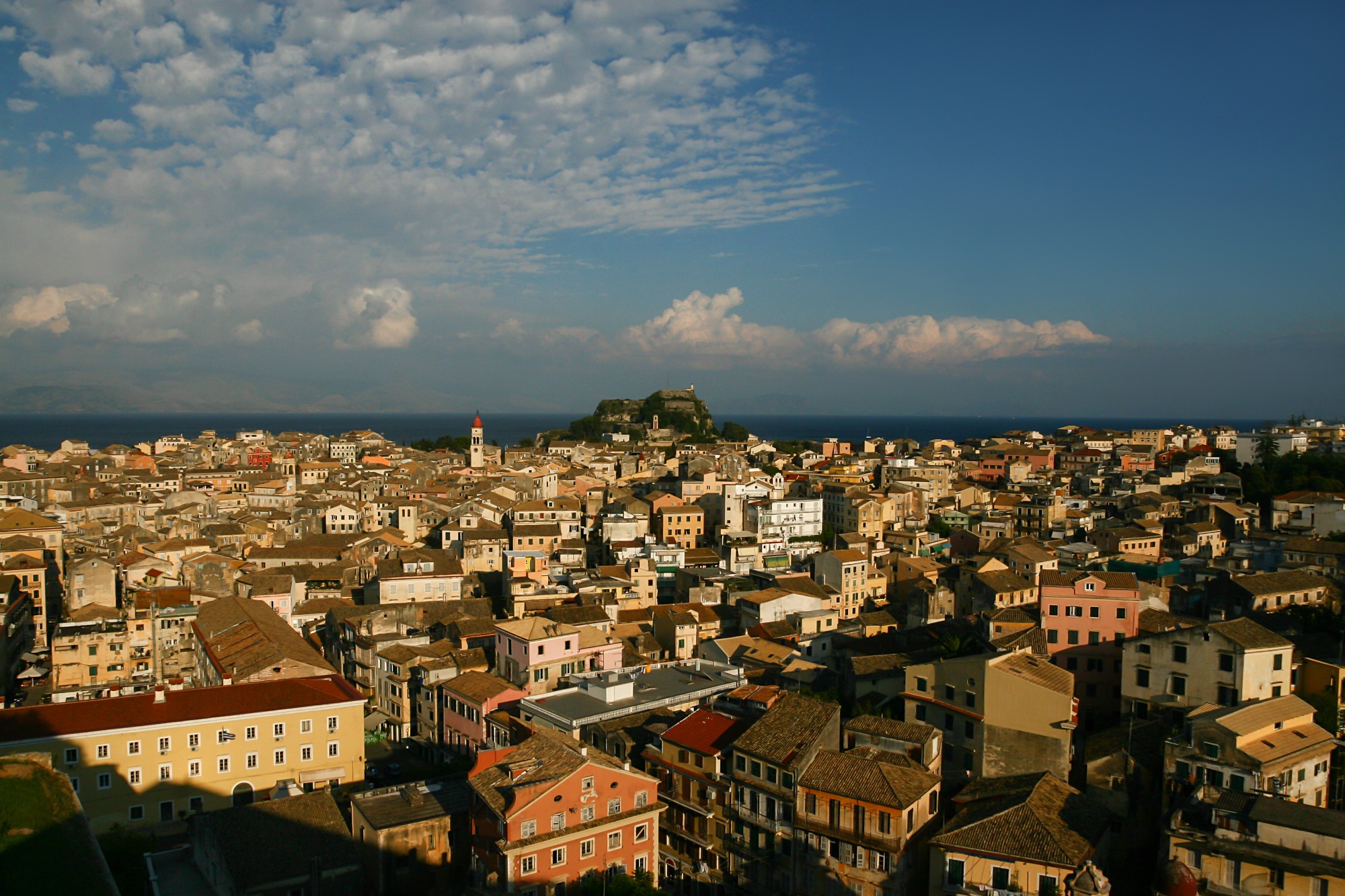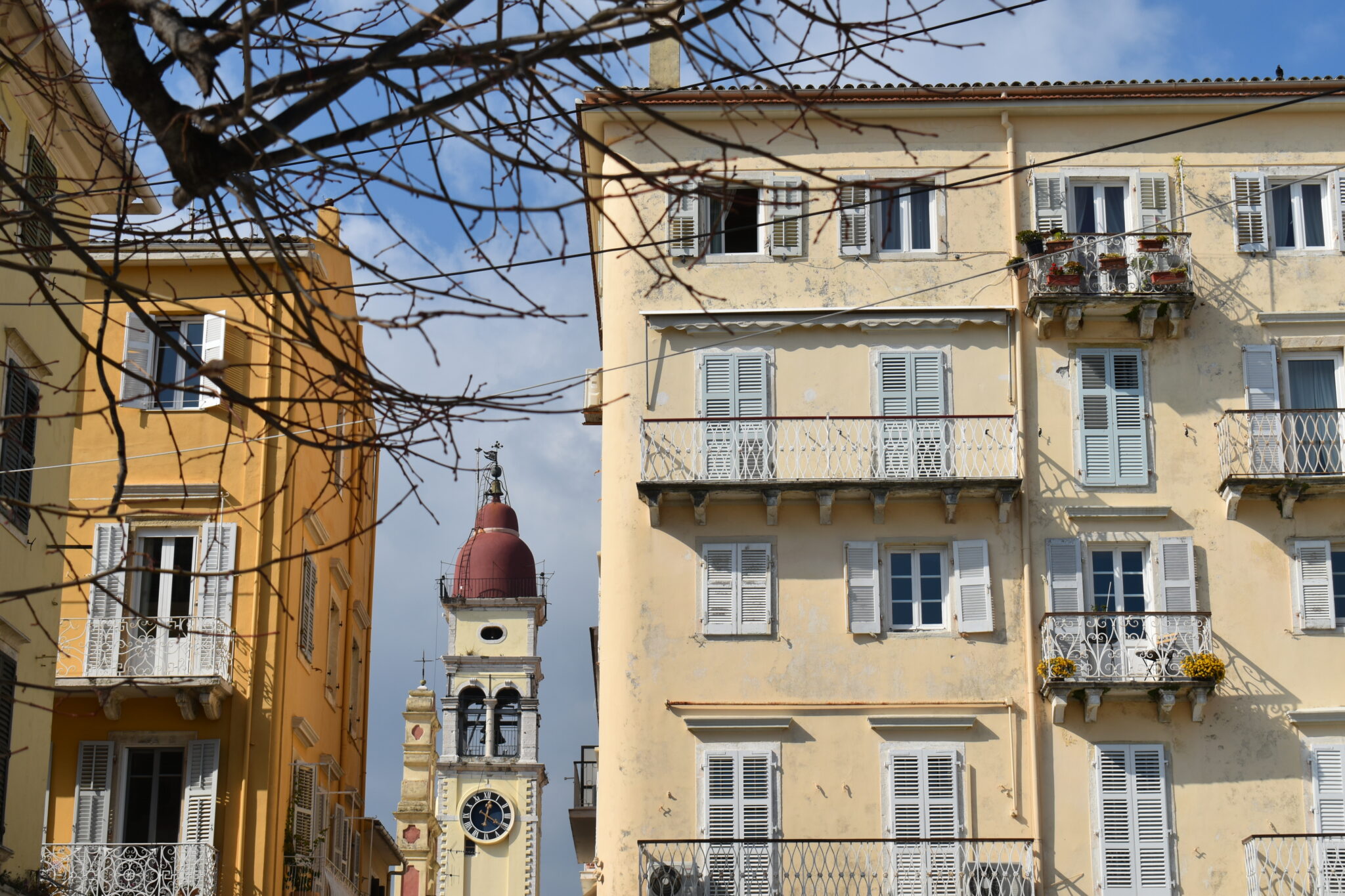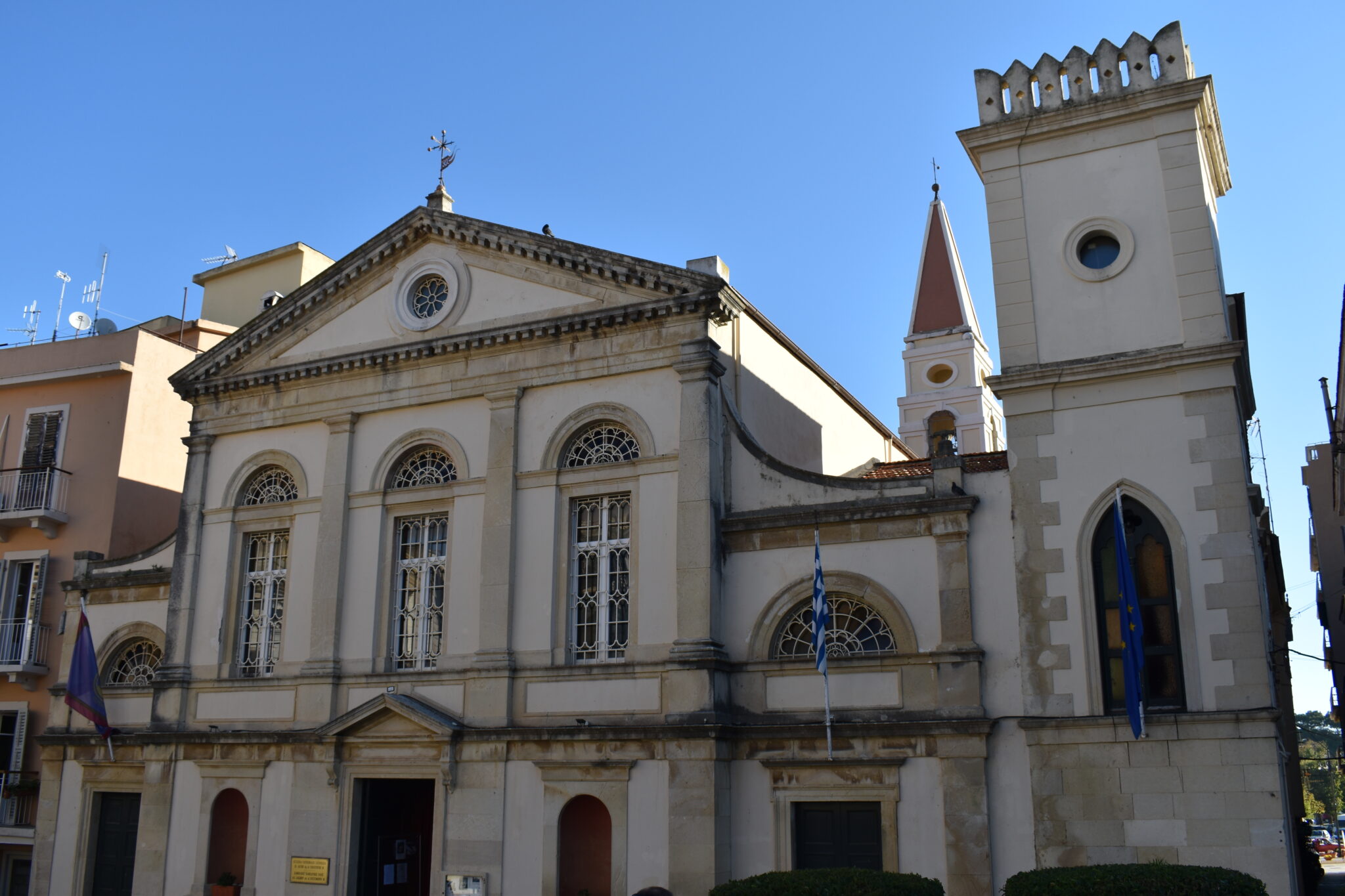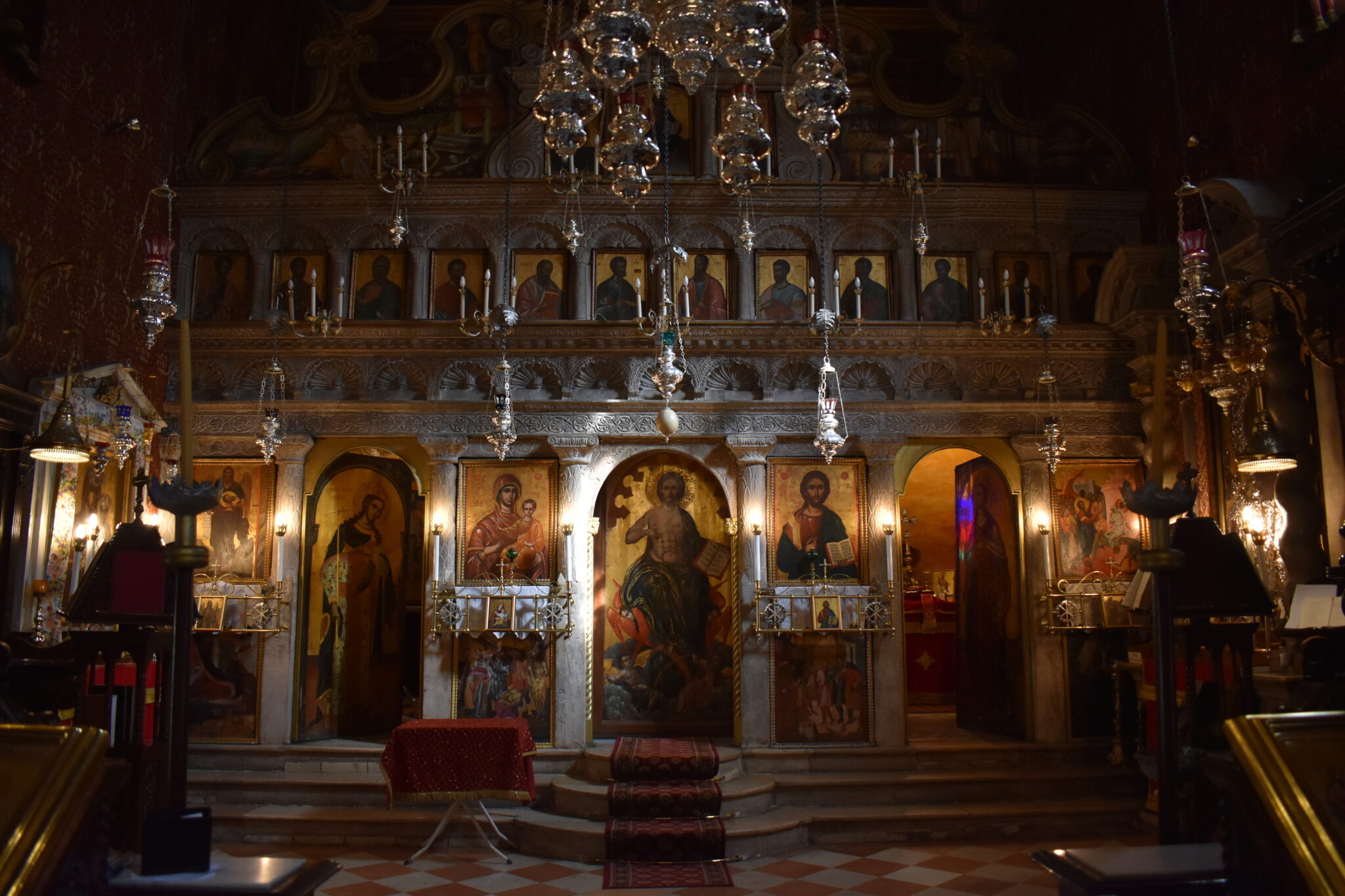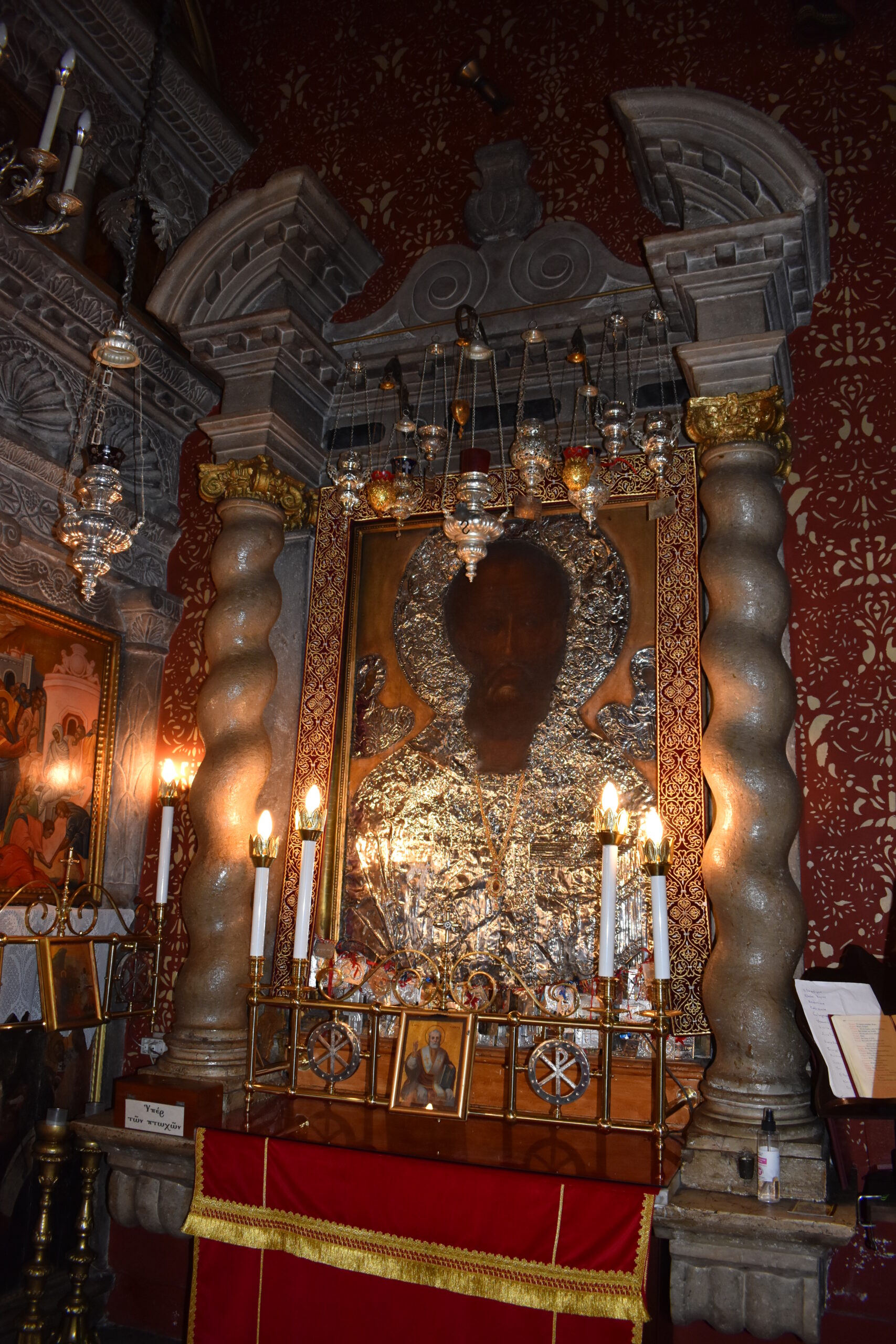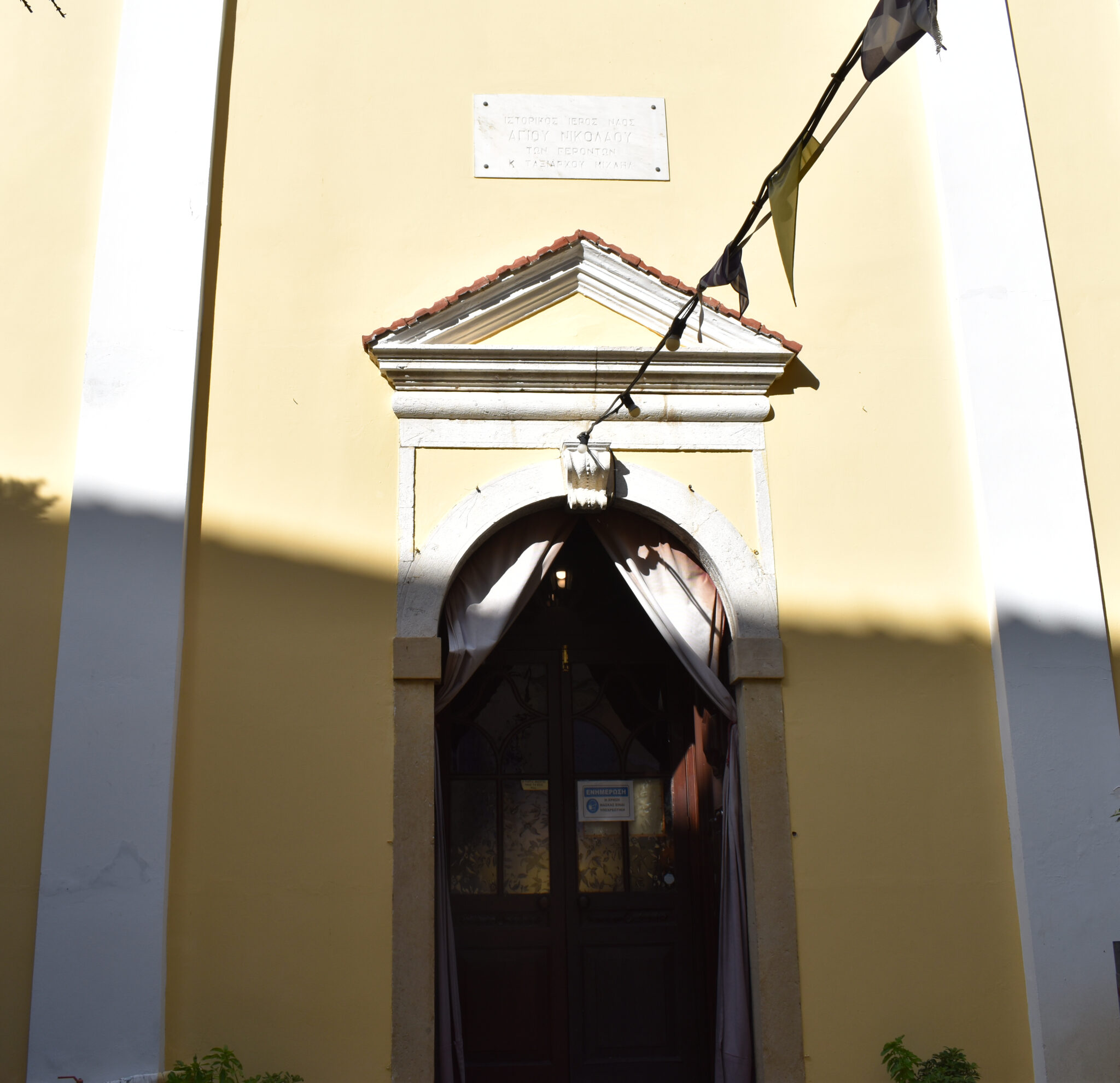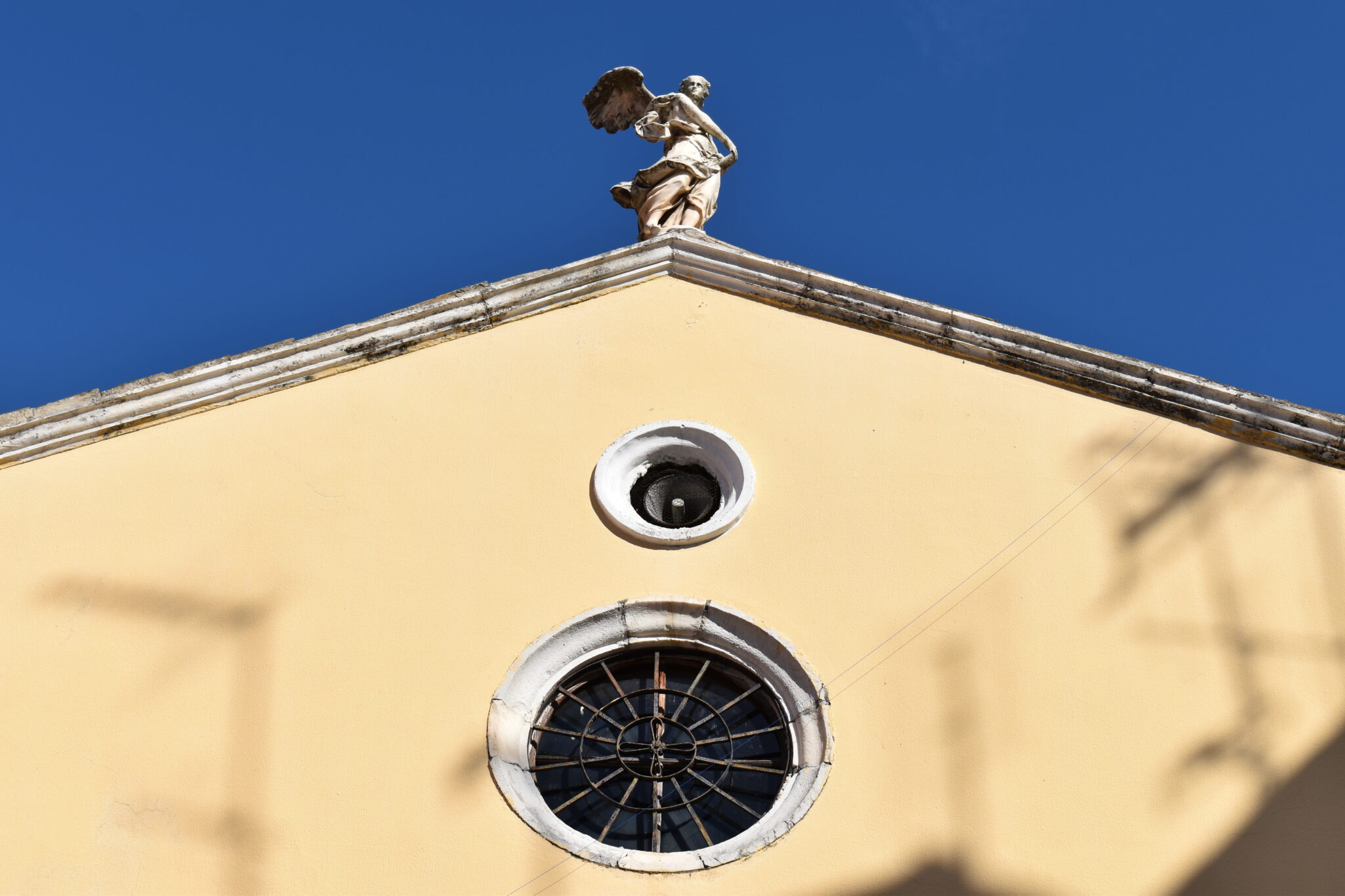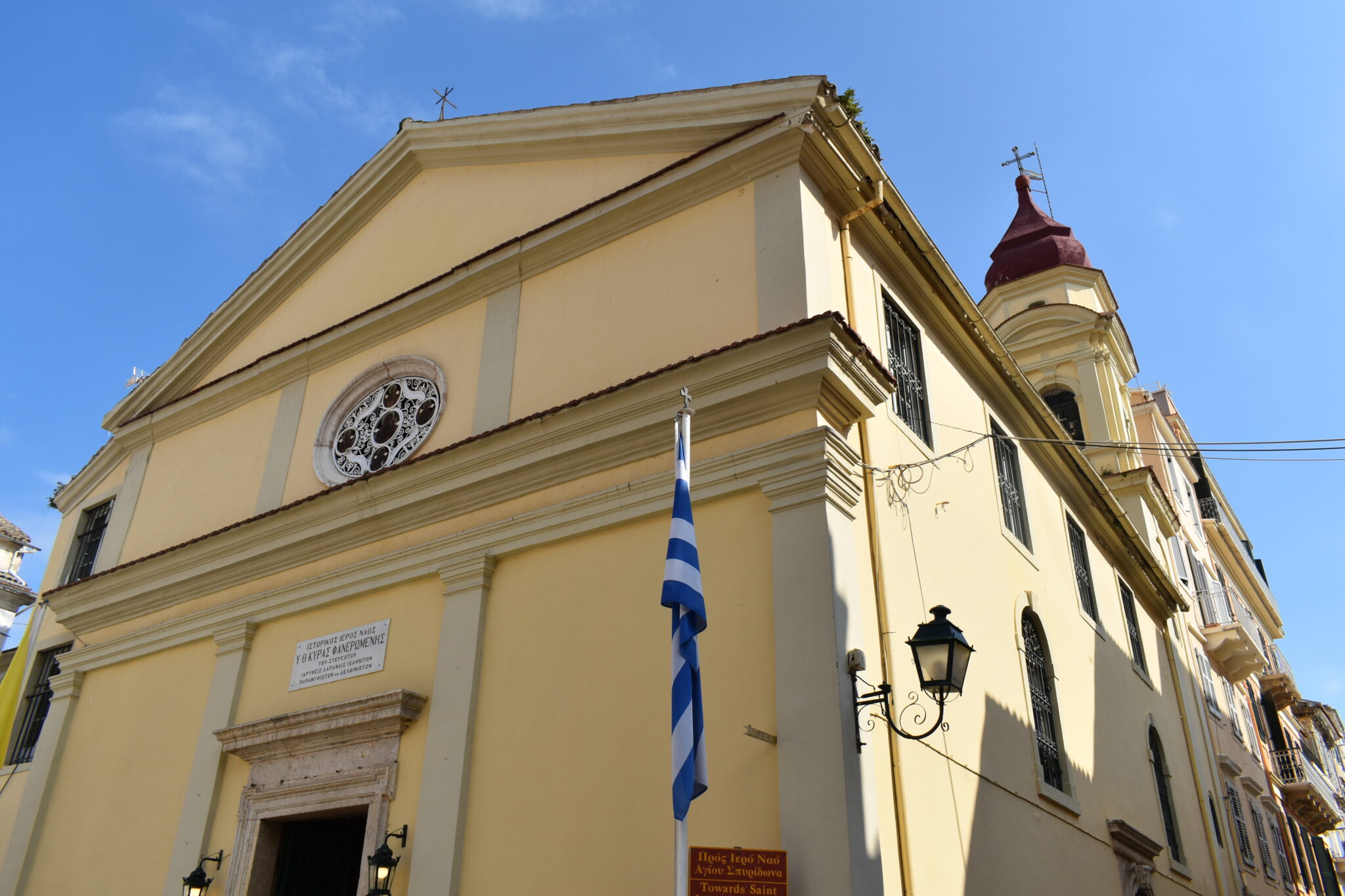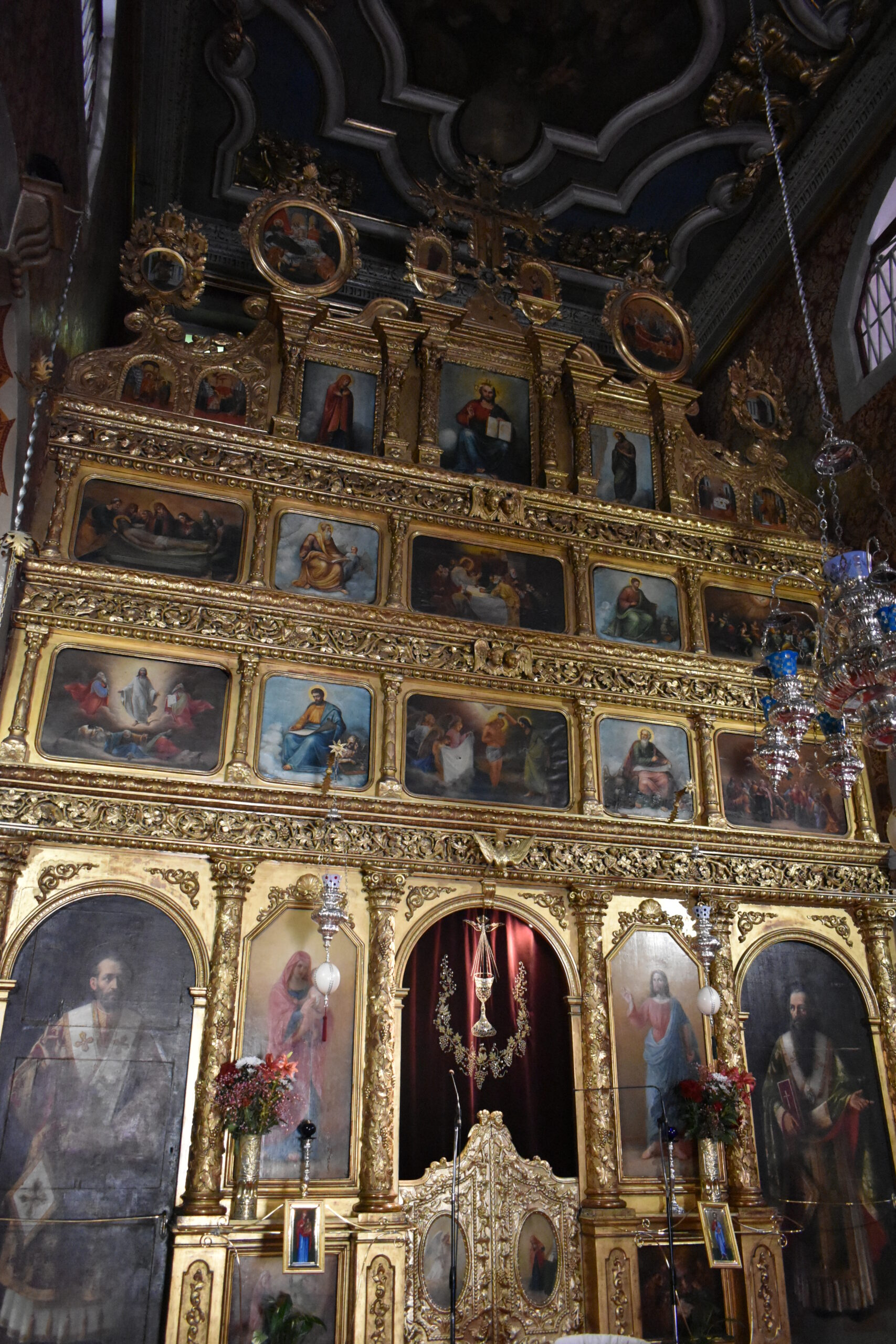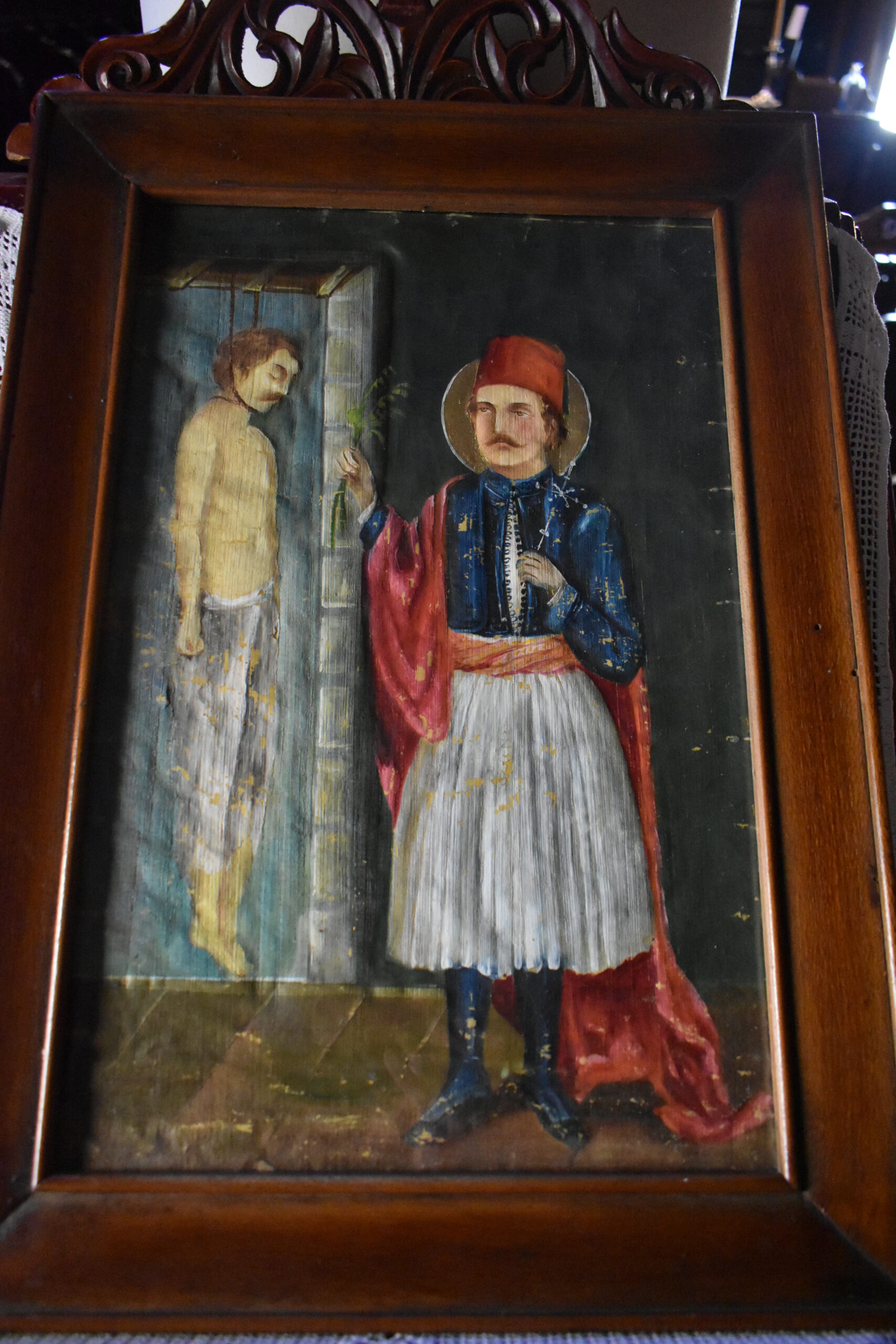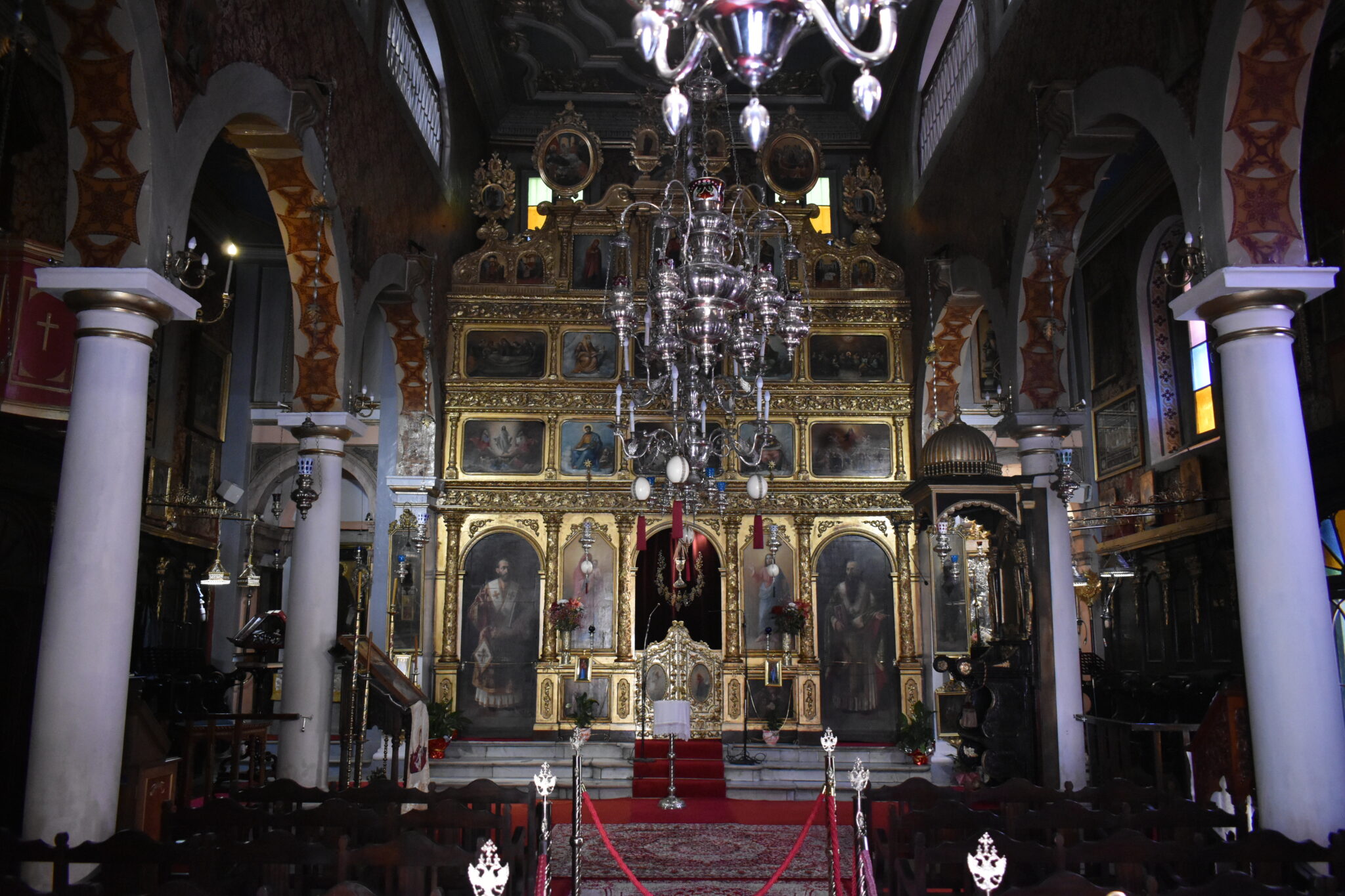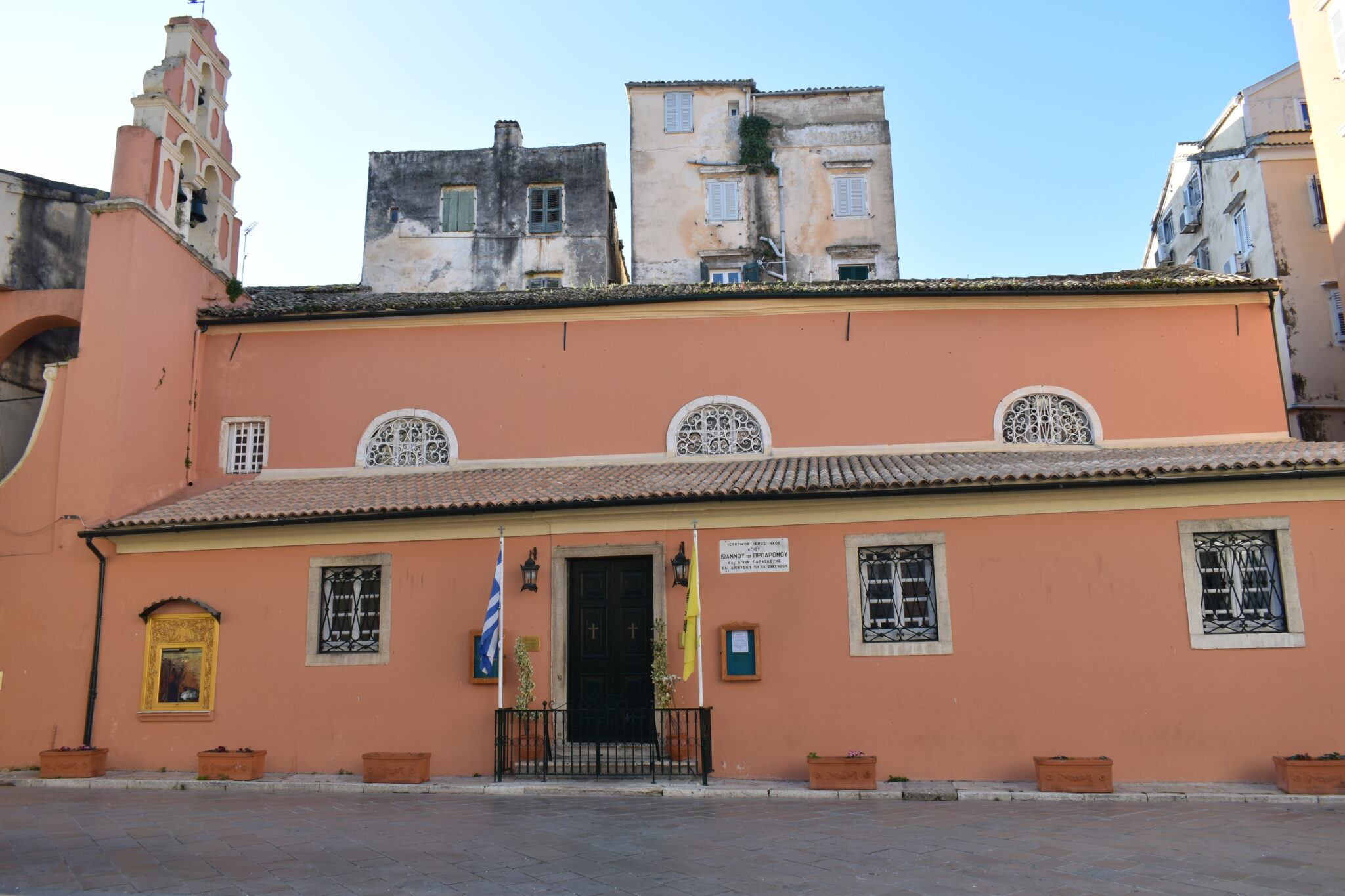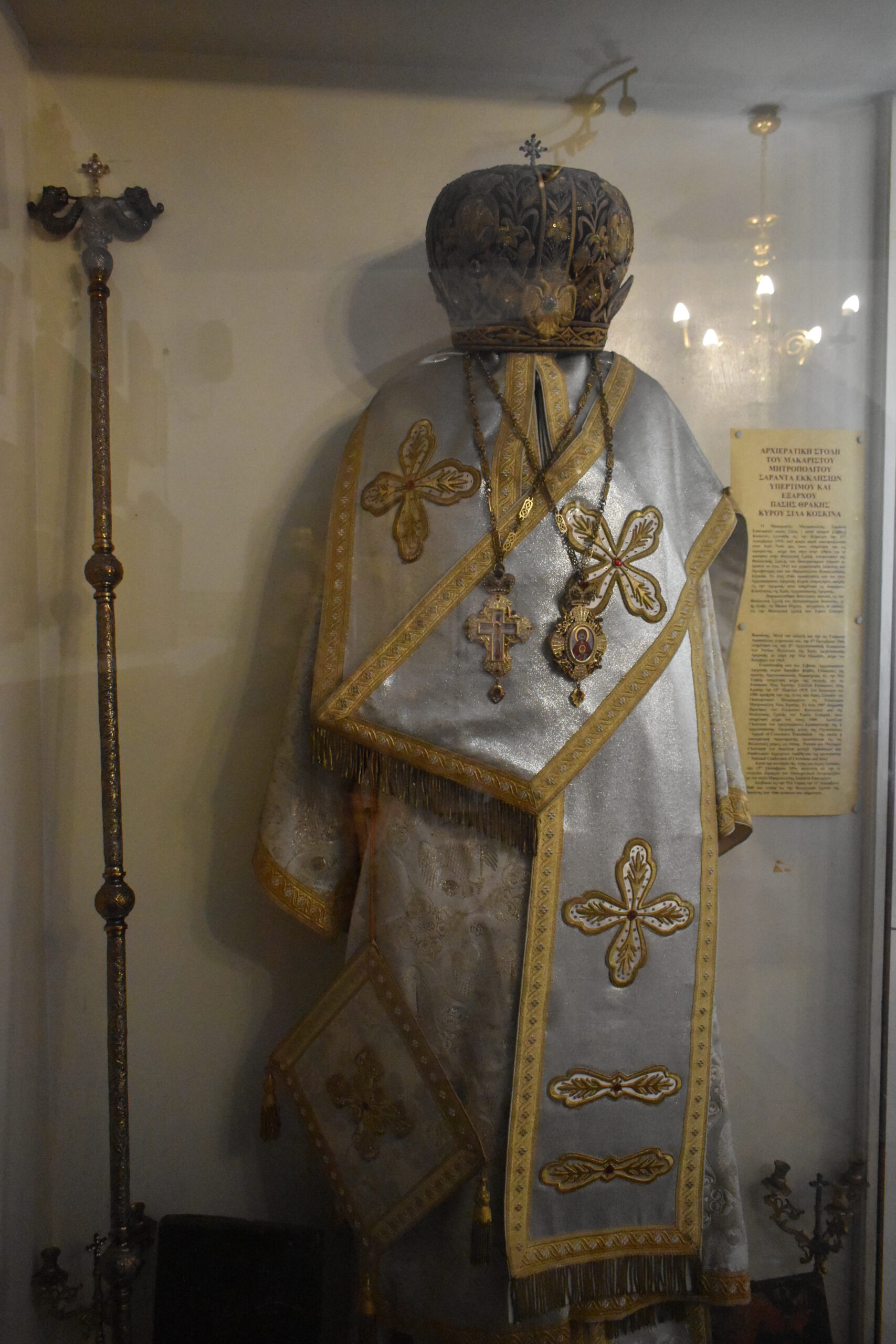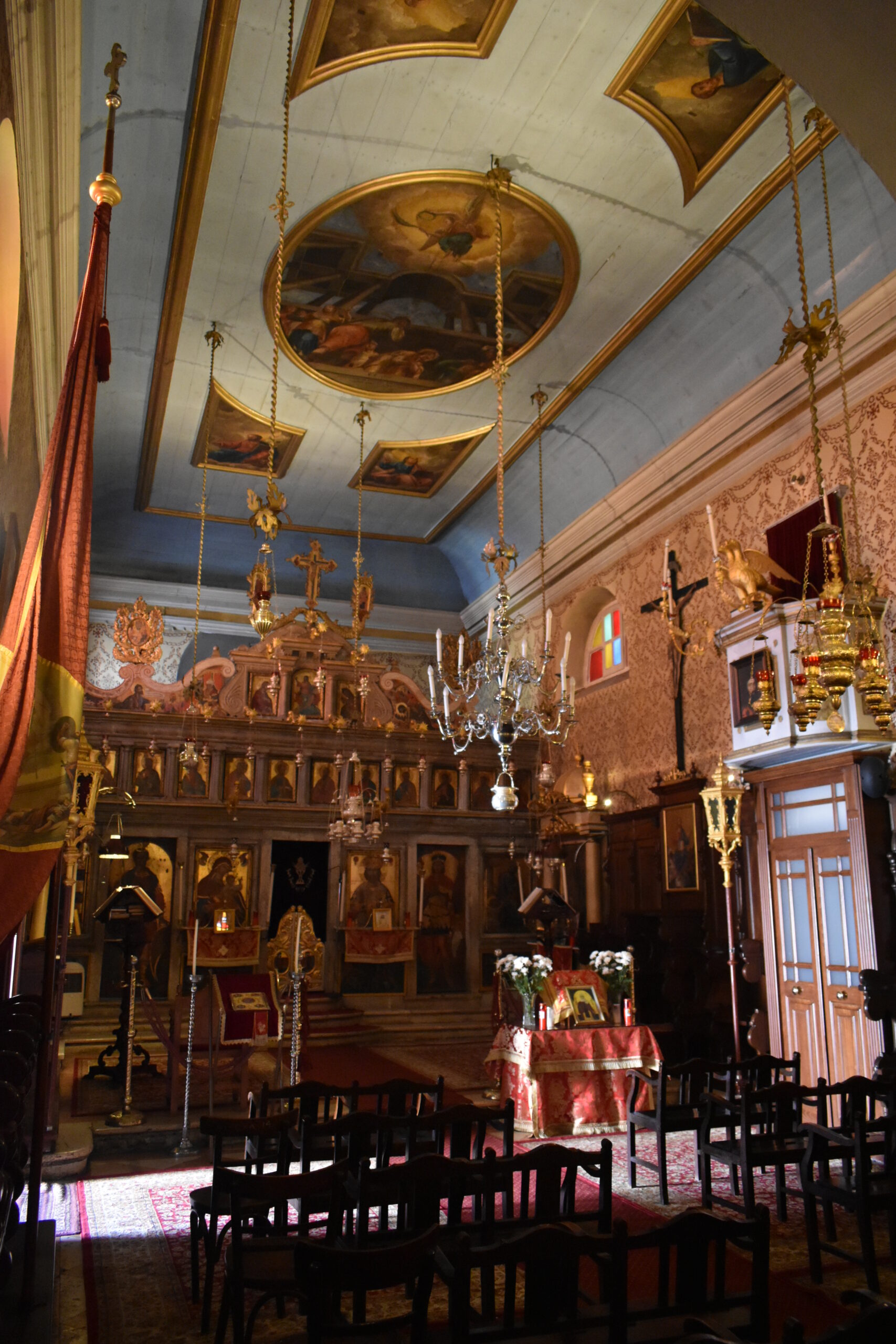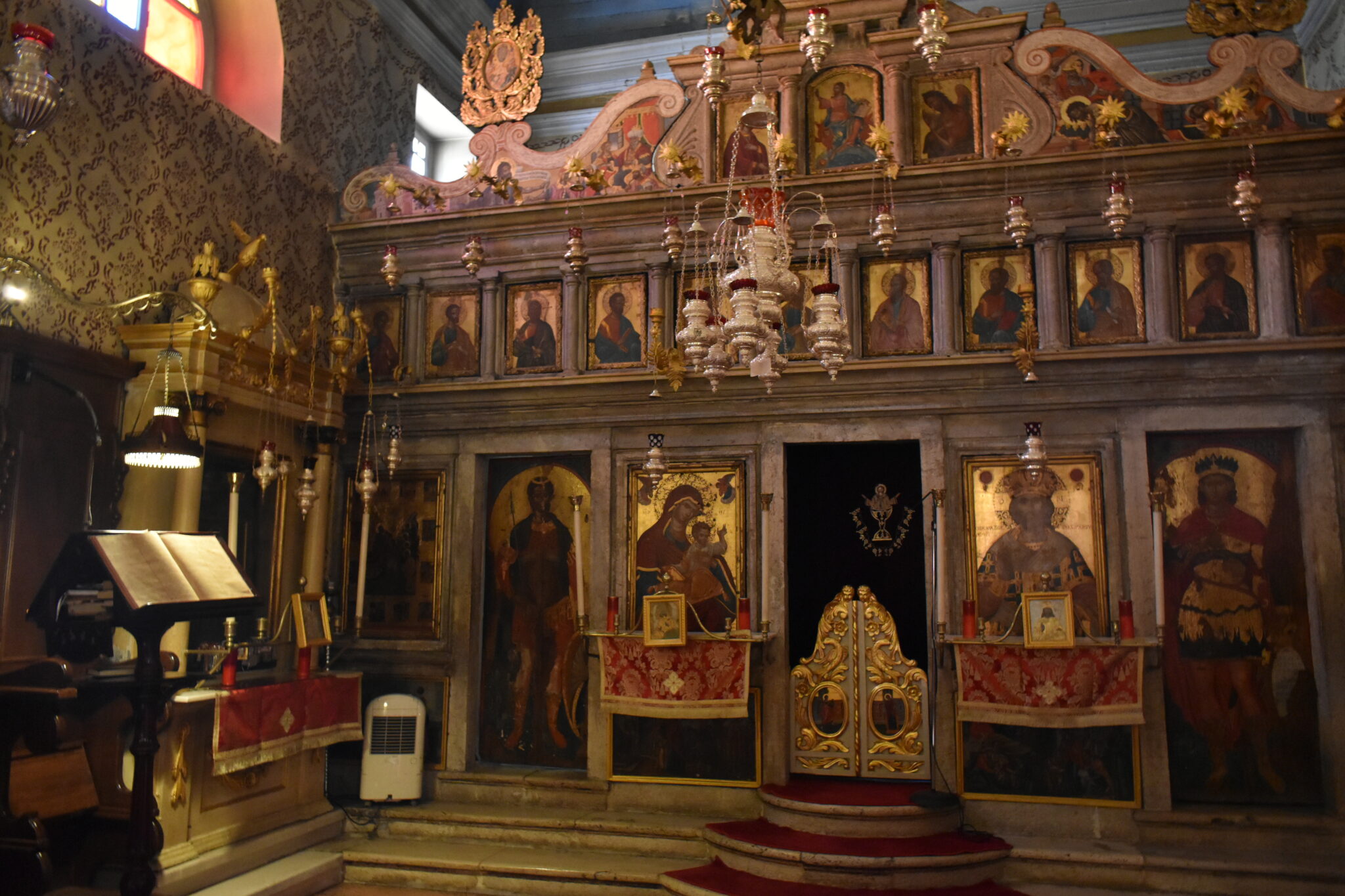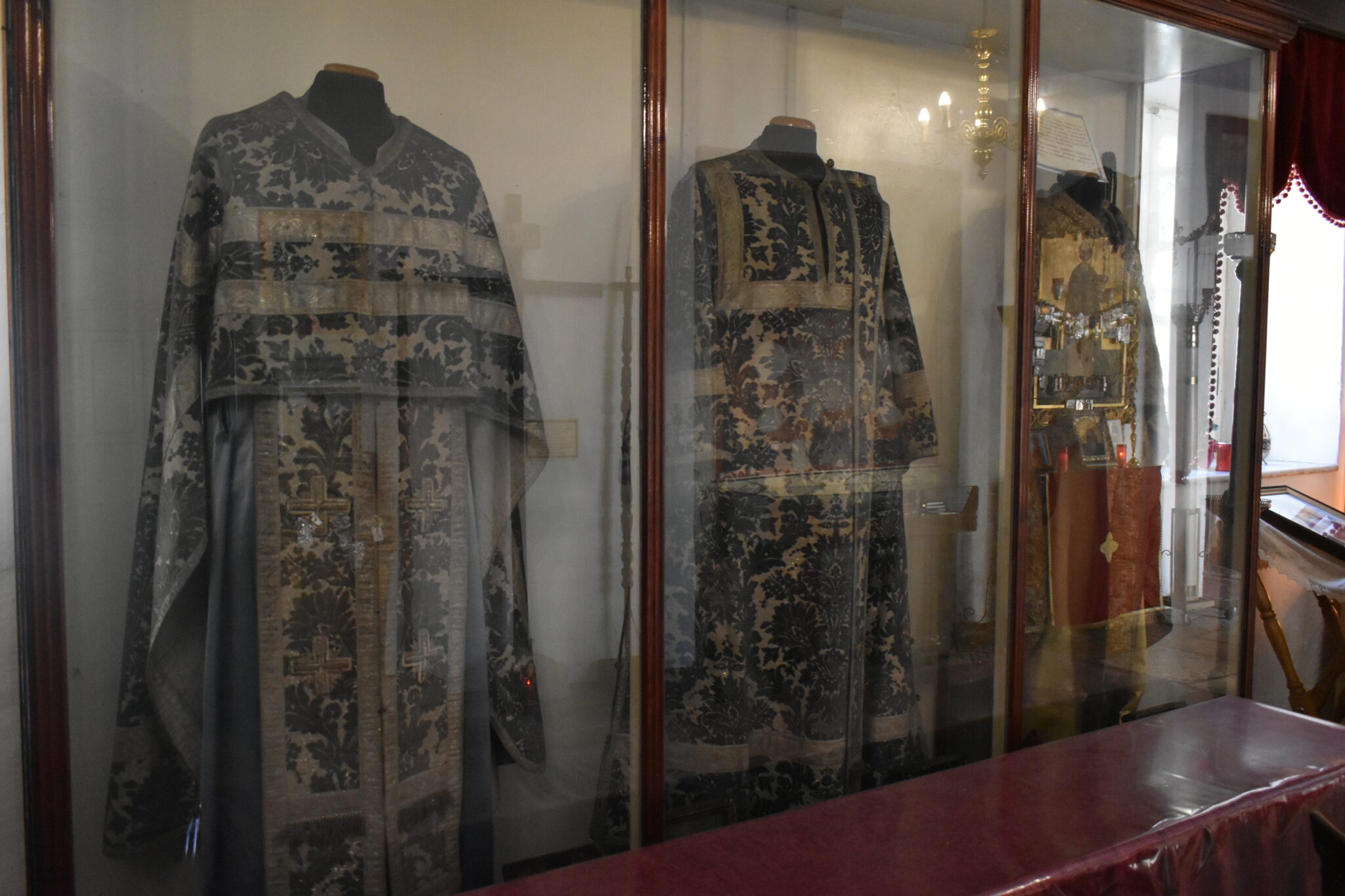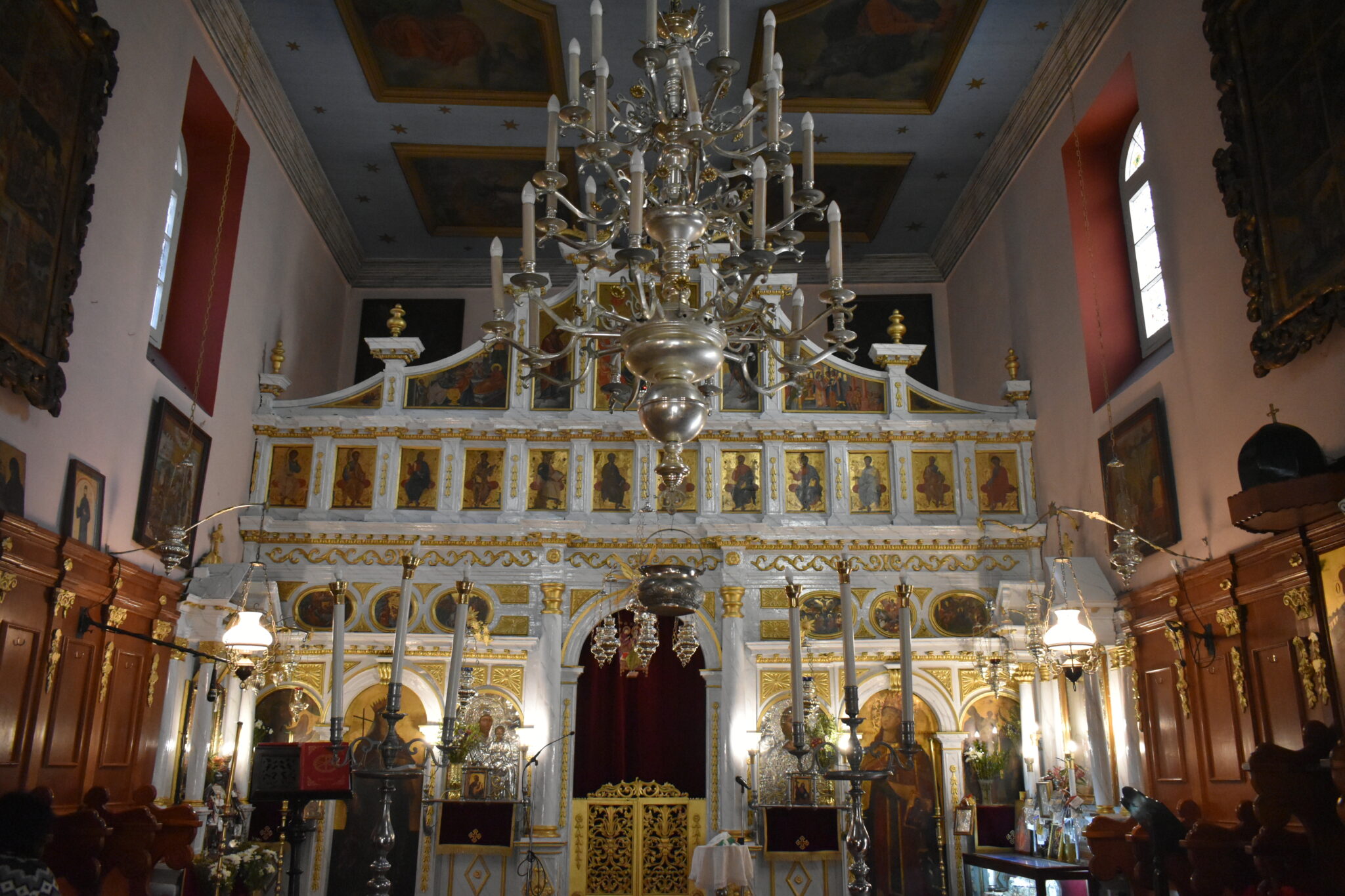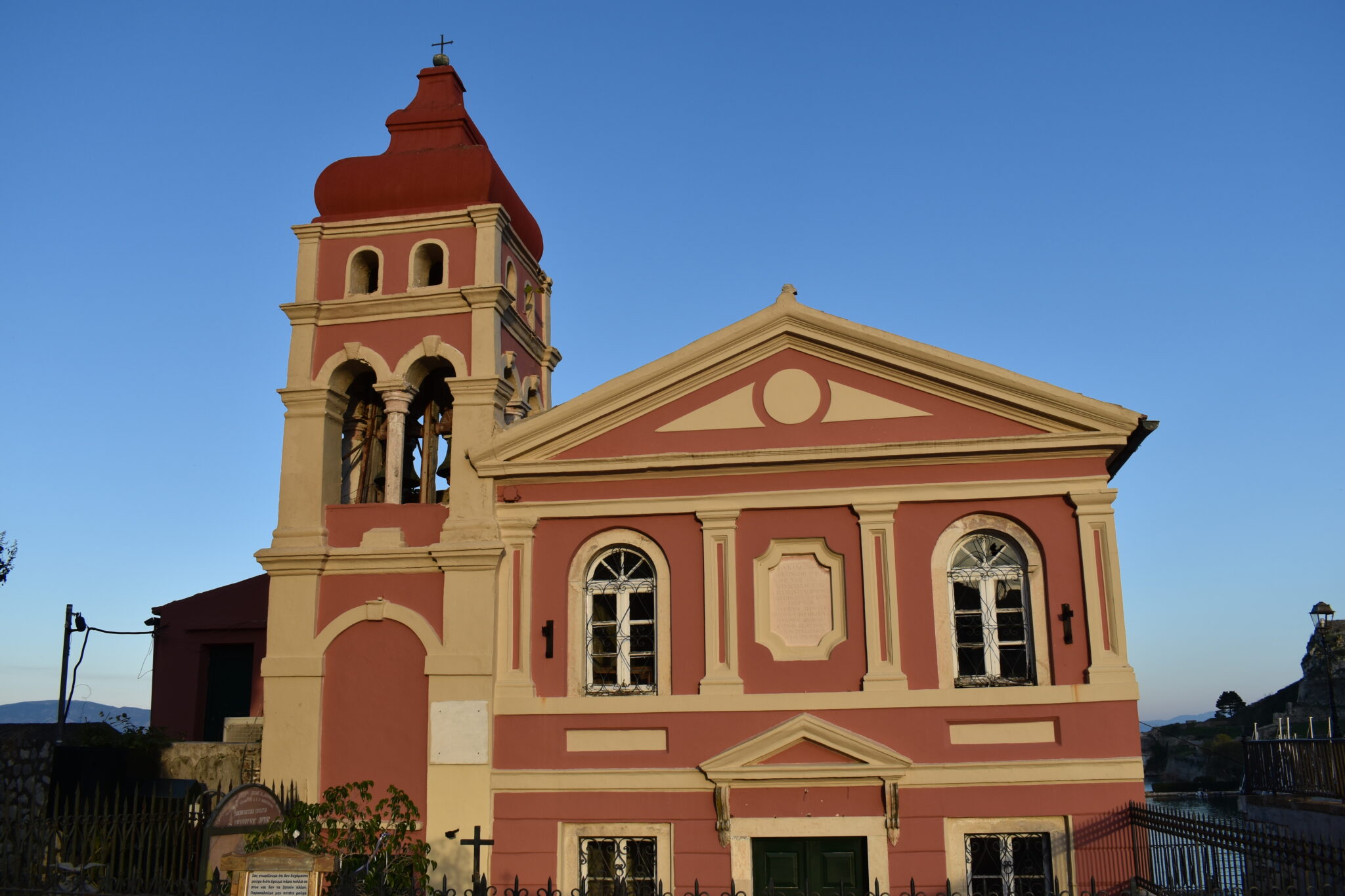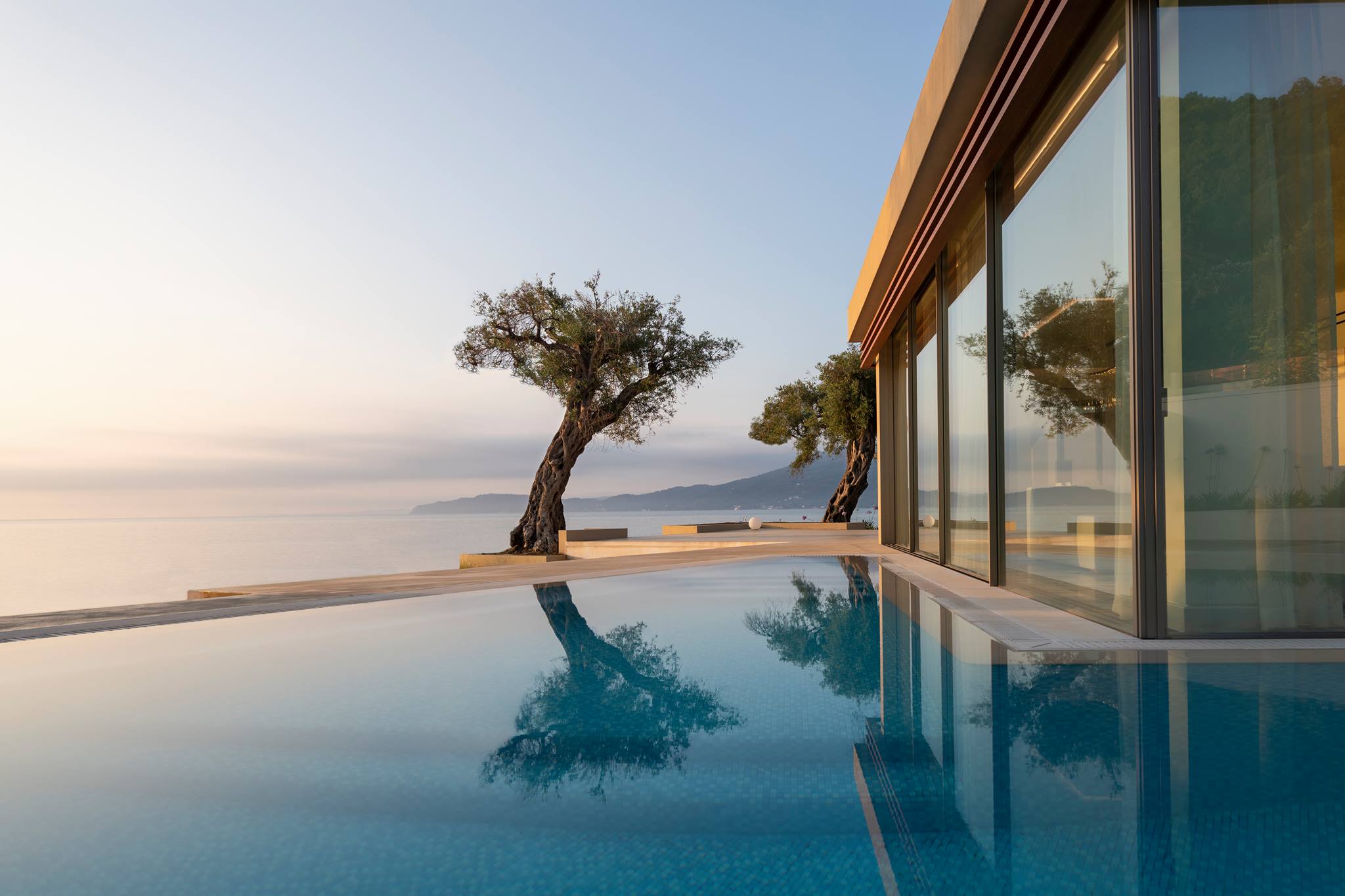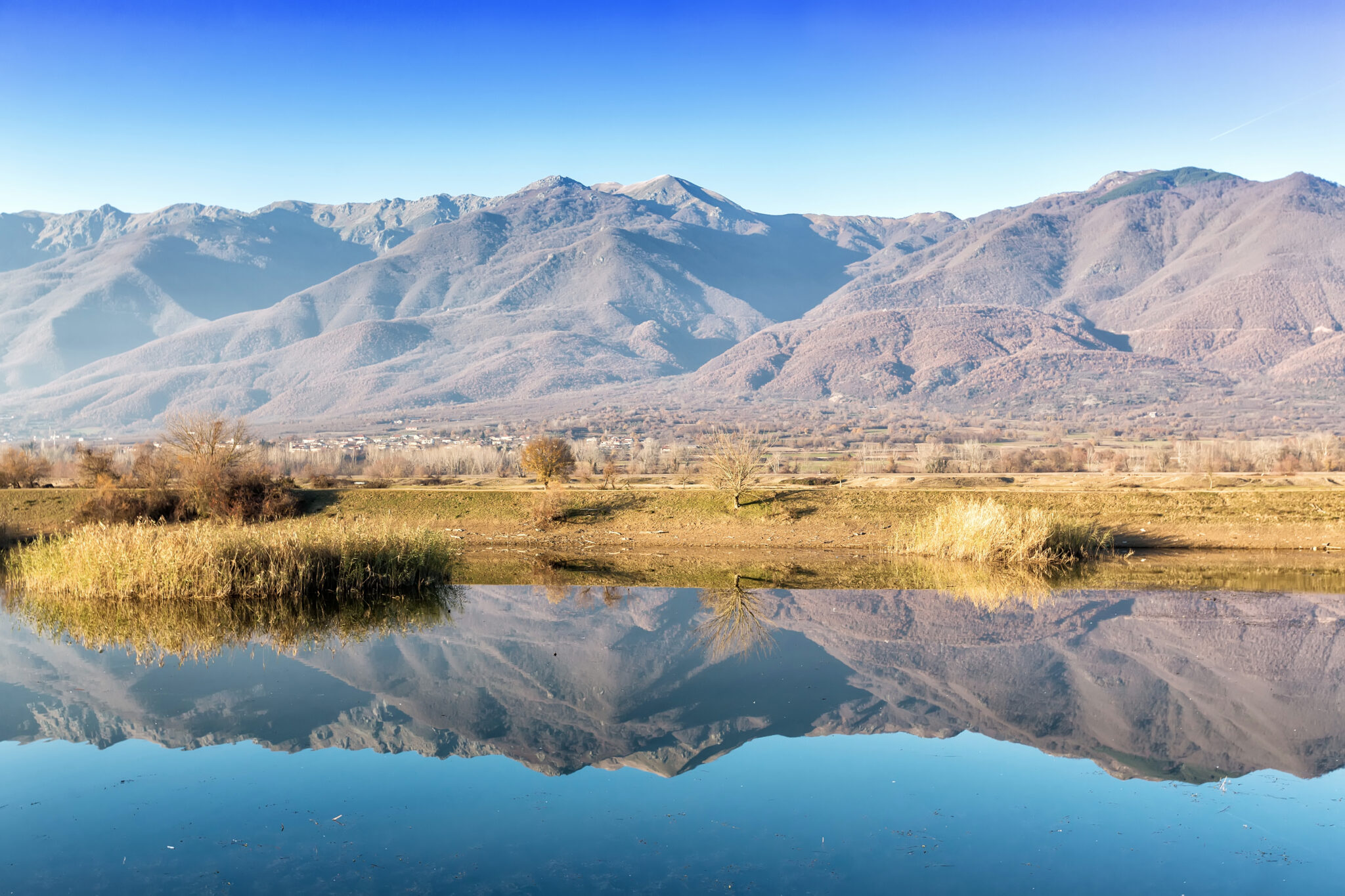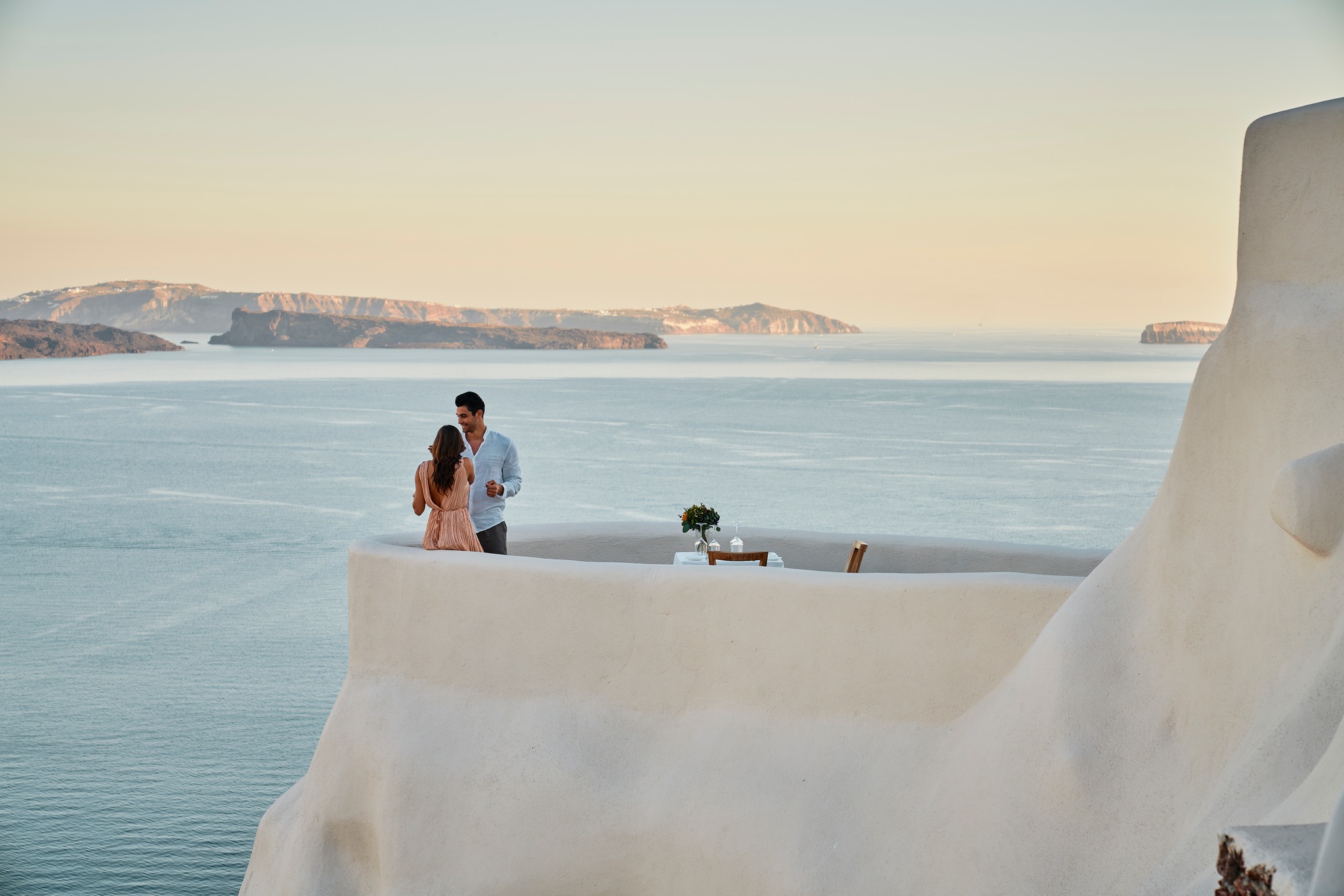For centuries, grandeur and quaintness have combined in Corfu’s Old Town, creating a unique blend of architectural styles. Recognized as a UNESCO World Heritage Site, the island’s capital features architectural masterpieces alongside folkish neighbourhoods, majestic monuments beside narrow alleys, and spacious squares amid staircases, with the blue sea contrasting the pastel and reddish hues of old buildings.
Influences from various European cultures have shaped the island’s distinctive character and history. Visitors are captivated by the charm and unique atmosphere of Corfu’s Old Town, which becomes even more enchanting during Easter, when spectacular customs unfold in Liston, Spianada, Plakada, alleyways, and numerous Corfiot churches.
A brief walk through the city reveals an impressive number of small and large temples. Often neighboring each other, they raise their intricate bell towers towards the Corfiot sky. The marble-decorated entrance gates invite passers-by to explore each temple’s history, showcasing the remarkable number of worship spaces in Corfu, a place that never experienced Ottoman rule.
In contrast, it remained a free Christian land, without religious oppression, as evidenced by the numerous churches that uniquely blend Byzantine and Catholic elements in their design. The remarkable “heavens,” or ceilings of the churches, the built-in shrines (with the right one always dedicated to the church’s patron saint and the left one to another saint, honored secondarily), the four-part psalm chants accompanied by a church organ, and the renowned Renaissance pews are all distinctive features worth exploring and observing in the Corfiot churches.
In addition to the more famous churches, such as St. Spyridon – the centre of the island’s religious life with its thematic bell tower, the 17th-century Catholic Duomo in Town Hall Square, the Metropolitan or Spiliotissa Church with its striking tile-red colour and Renaissance facade, and the former Anglican Church of St. George within the Old Fortress, it is worth stopping by, getting acquainted with, and admiring the following churches, each adding unique characteristics to Corfu’s Old Town.
Panagia Antivouniotissa
Following the coastal road in the “Mouragia” area, with a stunning view of Vido Island, a wide staircase leads to the top of the outwardly simple church—the only surviving single-aisle basilica from the late 15th century when it was most likely completed. Its most distinctive feature, characteristic of Corfiot churches of that time, is the exonarthex surrounding three sides of the church, forming a simple and peaceful atrium to which the bell tower is also attached. As was common during Venetian rule, many wealthy families were donors, supporters, and owners of churches; a 16th-century contract informs us that this was also the case with the Antivouniotissa Church.
Moreover, burials within church grounds were not unusual, so today, we can see family tombs of wealthy Corfiots and high-ranking clergy. Look for the large, carved tombstones on the floor of both the exonarthex and the main nave—some with relief emblems of nobles—and you will realise how the church’s history is inextricably linked to the island’s history.
Creating an interesting contrast with the austere exterior, the interior of the church boasts all the intricate elements that distinguished the Ionian island churches of that period. Tall pews, frescoes, and wood carvings create a solemn atmosphere and form an impressive backdrop for the works of iconography, precious relics, and portable icons displayed in the Byzantine Museum, housed within the church. This space offers a wonderful journey through five centuries of religious artistic expression and serves as a place where one can admire significant works of art while recognising how, despite the promotion of Catholic doctrine, the Byzantine tradition remained alive in Venetian-ruled Corfu.
St. Nicholas of the Elders
Known as the church where Ioannis Kapodistrias (the first head of state of independent Greece) was baptized in 1776, it served as the cathedral of the Great Protopapas until 1712. The church owes its name either to being the oldest church of St. Nicholas in the neighbourhood or to the assembly of elders that convened there. Its history remained rich up to more recent times, as it became the metropolitan church for Serbs who sought refuge in Corfu during World War I. During World War II, it served as a meeting place for resistance members.
Today, inside the church, one of the oldest carved stone iconostases is preserved, along with frescoes by Emmanouil Biounalis Tzane and Michail Damaskinos. Among these frescoes, the depictions of St. Kerkyra, St. Theodora, and St. Metaleipsis are particularly notable.
Pantokratoras
To reach Taxiarchis Square, consult the map located outside the aforementioned church. This part of Kambiello is adorned with beautiful mansions and a church built by the aristocratic families of Theotokis, Kapodistrias, and Kokkinis, who have been established in the area since the 14th century. Unfortunately, the church of Taxiarchis Michael they built suffered its first blow from a fire in 1545 and was completely destroyed during World War II.
Next to the site of that church, which was the most representative example of an Orthodox temple during the Venetian period, today we find the sacred temple of Pantokratoras, built in a typical Ionian style.
The 1.25 metre tall relief angel at the top of the temple was created by 18th-century Italian sculptor Toreti and serves as one of its most characteristic features, as a tribute to Taxiarchis – today’s Archangel – Michael. Here, one can also see an example of Emmanouil Tzane’s excellent work, who decorated the iconostasis with a representation of the Pantokrator. If you happen to be in Corfu for Easter, keep in mind that the epitaph procession of this temple starts at 2 pm on Good Friday.
Panagia Faneromeni or of the Xenon (Foreigners)
In a much more central location of the old town, at the locals’ favourite square called “Plakada of Agios,” you will find another church with an interesting history. You can recognise it by its soft yellow colour, the unique tiled baroque bell tower on the island, and its corner position opposite the Numismatic Museum. It has stood there since the 17th century when Epirotes, who sought refuge in Corfu during the years of Turkish rule, built the church in 1690 and dedicated it to Panagia Faneromeni, which was later known as Panagia of the Xenon. As a marble plaque above the entrance informs us, its construction was made possible thanks to the contributions and expenses of Stereots, Ioannites, Paramythiots, and Derviniots.
The interior of the three-aisled basilica is particularly impressive, mainly due to the exceptionally tall, gilded wooden-carved baroque iconostasis, which is widely regarded as the most magnificent and intricate on the entire island. It makes the whole interior sparkle, creating a wonderful contrast with the intense blue-coloured sky, which is also adorned with golden framed frescoes. Don’t miss the icon of Kyra Faneromeni, the one of the Prophet Elijah, a work by Corfiot painter Spyridon Prosalentis (1830 – 1895), and that of Saint George of Fustanella, a new martyr from Ioannina who refused to convert and was hanged by order of Kati Pasha, a martyrdom depicted in his icon.
Agios Ioannis Prodromos
Right across from Panagia of the Xenon, another church, rich in history and religious relics and even older, was built in 1480 by noble families of the island. As one passes through the northern narthex, they can see, albeit not complete, wall paintings from the 15th-16th century. Turning their gaze to the floor of this unique quadrilateral basilica, they can easily discern numerous funeral monuments from the era of Venetian rule.
In the same space, the small museum’s display cases showcase ecclesiastical vestments, as well as the cross of the prominent Corfiot scholar Nikephoros Theotokis, who performed his priestly duties here. Other notable personalities associated with the Church of St. John include Ioannis Kapodistrias, Dionysios Solomos, and Iakovos Polylas, who attended services here. As for the interior decoration, it is equally impressive, featuring an elegant, entirely marble-crafted iconostasis, adorned with works by iconographers from both the Corfu and Cretan schools.
The aforementioned churches are just a sample of the splendid religious monuments one encounters when visiting the old town of Corfu. Be sure to also visit Panagia del Carmine, built in 1633 near the old Jewish quarter by Franciscan monks; St. Eleftherios, constructed in 1700 in the corner of Agios; Panagia Mandrakina, an 18th-century church with vibrant colours and a stunning location; and the 8-century-old St. Francis of Assisi, where the keys to the city were handed over to the Venetians. These visits will bring you in touch with a significant portion of the rich culture and history of this unique place.
Read also:
The ‘Grand Lady’ of the Ionian Sea: Culture on Corfu



